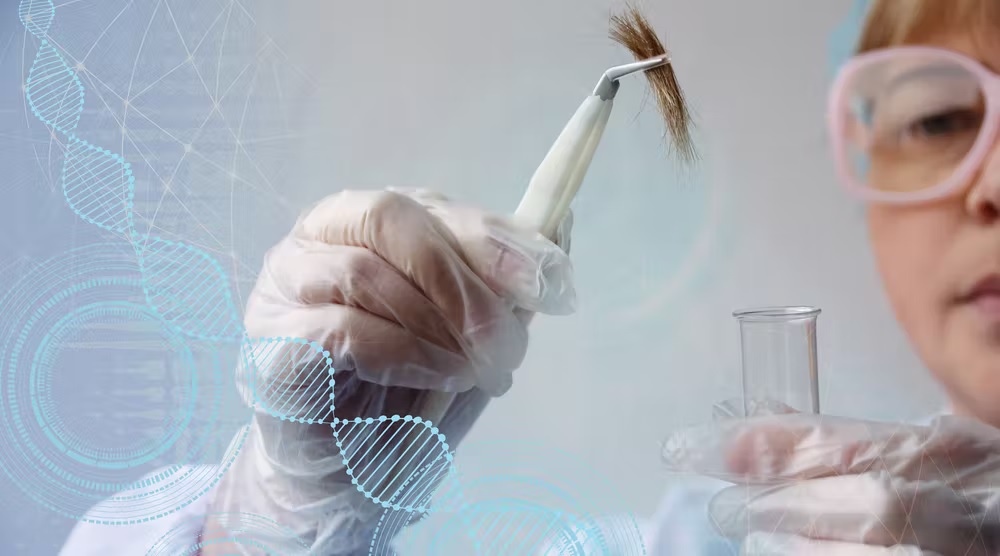In today’s world, DNA testing has become a powerful tool for unraveling mysteries and providing answers to questions that were once shrouded in uncertainty. The development of DNA testing has fundamentally changed how we handle this delicate matter when it comes to establishing paternity.
This blog will delve into the intriguing realm of DNA testing paternity hair, shedding light on how it offers reliable results and much-needed clarity to individuals seeking to establish parentage.
How Does DNA Testing Paternity Hair Work?
- Sample Collection: Hair samples are first taken from the child, the purported father, and occasionally the mother. These samples can be collected from the roots of the hair for optimal DNA extraction.
- DNA Extraction: The collected hair samples are then subjected to a DNA extraction process. This process separates the DNA from other components of the hair, such as proteins and pigments.
- DNA Analysis: Once the DNA is extracted, it undergoes a comprehensive analysis. Specific regions of the DNA, known as genetic markers, are examined and compared between the alleged father, child, and any other potential parents.
- Result Interpretation: The results are interpreted by comparing the genetic markers. A match between the child’s markers and those of the alleged father provides strong evidence of paternity, while significant differences suggest non-paternity.
Advantages of DNA Testing Paternity Hair
- Non-Invasive and Painless: Unlike some other methods, such as amniocentesis or blood tests, hair sample collection is painless and straightforward. It is especially useful when testing infants or young children who may find traditional blood tests uncomfortable.
- Convenience and Discreetness: Collecting hair samples is a convenient and discreet process. It can be done in the privacy of one’s home or at a DNA testing facility, making it a viable option for individuals who prefer to maintain their privacy throughout the paternity testing process.
- High Accuracy: DNA testing paternity hair is highly accurate, with results that are often considered conclusive evidence in legal proceedings. The analysis of multiple genetic markers ensures a robust and reliable outcome, providing clarity and resolution in paternity disputes.
Toxicology Testing Service: Enhancing DNA Paternity Testing
In addition to DNA analysis, a toxicology testing service can play a significant role in paternity cases. These services involve the examination of substances within the body, such as drugs or alcohol, and can have implications for child custody and support determinations.
- Child Custody and Visitation: Courts may consider toxicology test results when making decisions about child custody and visitation rights. Ensuring the safety and well-being of the child is of utmost importance.
- Child Support Determinations: In cases where child support is a factor, the results of a toxicology testing service can influence the financial obligations of the alleged father. Courts may adjust child support payments based on the presence of substance abuse issues.
Lifting Fingerprints Service: Ensuring Secure Handling of Evidence
In the realm of paternity testing, as in many other legal matters, the proper handling of evidence is essential. Lifting fingerprints service is an invaluable tool for preserving the integrity of evidence and ensuring its admissibility in court.
- Evidence Authentication: Fingerprints are unique to each individual, making them a reliable means of authenticating evidence. When evidence is properly handled and authenticated, it can carry more weight in legal proceedings.
- Ensuring Admissibility: Courts have stringent standards for the admissibility of evidence. Evidence that has been mishandled or tampered with may not be considered by the court. Lifting fingerprints service helps ensure that evidence is handled with care and integrity.
Patent Plastic and Latent Fingerprints: Uncovering the Truth
Another crucial aspect of paternity testing and, more broadly, forensic science is the analysis of fingerprints. Both patent plastic and latent fingerprints can be pivotal in determining paternity and resolving legal disputes.
Patent Plastic Fingerprints
Patent plastic fingerprints are those that are readily visible to the naked eye. The advantage of patent plastic fingerprints is their immediate identification. They can be quickly matched to a specific individual, making them a valuable tool in paternity cases where evidence needs to be linked to a particular person.
Latent Fingerprints
Alternatively, latent fingerprints are not apparent to the human eye and can only be found through specific methods. Latent fingerprints are a staple of forensic science, and their analysis can provide critical information in paternity disputes. By revealing latent fingerprints on relevant items or documents, investigators can piece together the truth.
Resolve Paternity Disputes with DGI
In the world of paternity testing and forensic science, clarity is paramount. DNA testing paternity hair offers a reliable and non-invasive method for establishing paternity with accuracy and confidence. Don’t let uncertainty linger. Contact Drake Group Investigations (DGI) now to embark on your journey towards clarity and peace of mind. With the power of DNA testing paternity hair and the support of our expert team, you can move forward with confidence, knowing that clarity is within reach.

